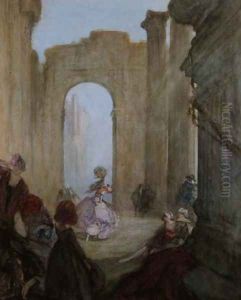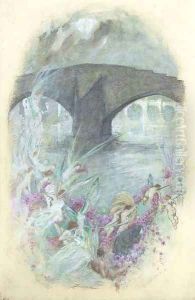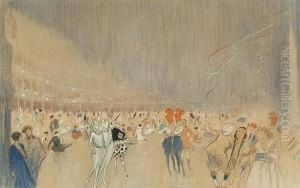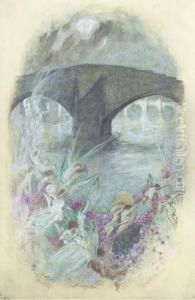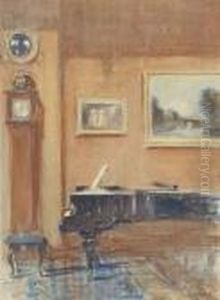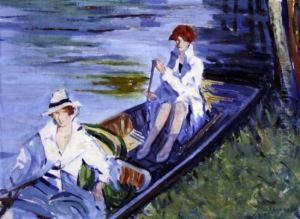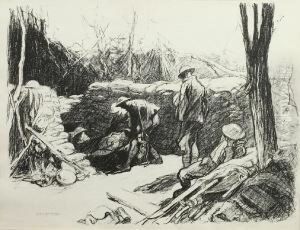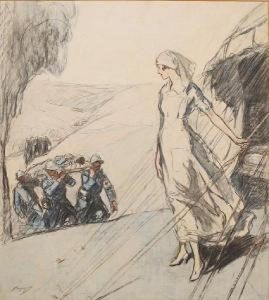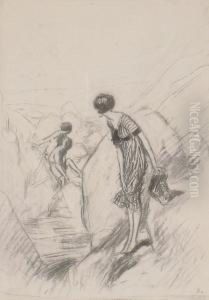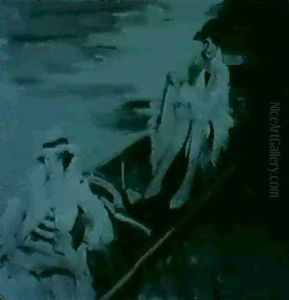Claude Shepperson Paintings
Claude Shepperson was a British artist and illustrator born in 1867 in Hackney, London. He was known for his delicate watercolor paintings and for his contributions as an illustrator in various publications. Shepperson's work was characterized by a gentle, impressionistic style, which often captured the subtleties of English landscapes and the nuances of social life in the late 19th and early 20th centuries.
Educated at the Slade School of Fine Art in London, Shepperson was deeply influenced by the teachings of Frederick Brown and Philip Wilson Steer, both of whom emphasized the importance of working directly from nature. He also spent time studying at the Académie Julian in Paris, which further refined his technique and exposed him to the burgeoning Impressionist movement.
Shepperson's illustrations were frequently featured in magazines such as 'The Graphic' and 'Punch', and he was a member of the Royal Society of British Artists and the Royal Institute of Painters in Water Colours. Despite his success as an illustrator, Shepperson remained devoted to watercolor painting throughout his life. He often exhibited his work, including at the prestigious Royal Academy of Arts in London.
Claude Shepperson's artistry extended beyond painting and illustration. He was also known for his printmaking, particularly his drypoints, which are held in high regard for their technical skill and artistic sensitivity. Unfortunately, Shepperson's career was cut short when he died in 1921, leaving behind a legacy of work that continues to be appreciated for its quiet elegance and charm.
